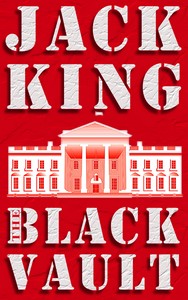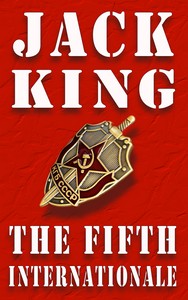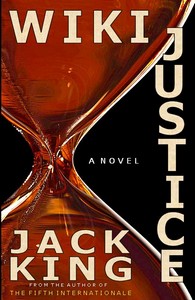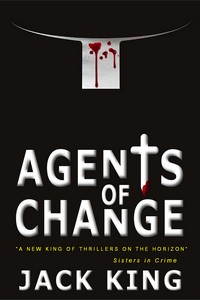Classified information is sensitive information to which access is restricted by law or regulation to particular classes of people. A formal security clearance is required to handle classified documents or access classified data. The clearance process requires a satisfactory background investigation. There are typically several levels of sensitivity, with differing clearance requirements. This sort of hierarchical system of secrecy is used by virtually every national government. The act of assigning the level of sensitivity to data is called data classification. Government classification The purpose of classification is ostensibly to protect information from being used to damage or endanger national security. Classification formalizes what constitutes a "state secret" and accords different levels of protection based on the expected damage the information might cause in the wrong hands.
Classification levels Although the classification systems vary from country to country most have levels corresponding to the following (from the highest level to lowest): Top Secret (TS)
Secret
Confidential
Restricted
Unclassified
Depending on the level of classification there are different rules controlling the level of clearance needed to view such information and how it must be stored, transmitted, and destroyed. Additionally, access is restricted on a "need to know" basis. Simply possessing a clearance does not automatically authorize the individual to view all material classified at that level or below that level. The individual must present a legitimate "need to know" in addition to the proper level of clearance.
Atomic information Government information about nuclear weapons such as nuclear warheads often has an additional marking to show it contains such information.
Sharing classified information between countries
When a government agency or group shares information between an agency or group of other country’s government they will generally employ a special classification scheme which both parties have previously agreed to honor. For example, sensitive information shared amongst NATO allies has four levels of security classification; from most to least classified, COSMIC TOP SECRET (CTS), NATO SECRET (NS), NATO CONFIDENTIAL (NC), and NATO RESTRICTED (NR). A special case exists with regard to NATO UNCLASSIFIED (NU) information. This is NATO property and must not be made public without NATO permission. Another marking, ATOMAL, is applied to U.S. RESTRICTED DATA or FORMERLY RESTRICTED DATA and United Kingdom Atomic information that has been released to NATO. ATOMAL information is marked COSMIC TOP SECRET ATOMAL (CTSA), NATO SECRET ATOMAL (NSA), or NATO CONFIDENTIAL ATOMAL (NCA). In cases where a country wishes to share classified information bilaterally (or multilaterally) with a country that has a sharing agreement, the information is with the countries it can be shared with. Those countries would have to maintain the classification of the document at the level originally classified (TOP-SECRET, SECRET, etc.). A European defence organisation, codenamed OCCAR, has three levels of classification: OCCAR SECRET, OCCAR CONFIDENTIAL, OCCAR RESTRICTED.
By country
Most countries employ some sort of classification system for certain government information. For example, in Canada information which the U.S. would classify SBU (Sensitive but Unclassified) is called "protected" and further subcategorized into levels A, B, and C.
United Kingdom
The United Kingdom currently uses four levels of classification — from lowest to highest, they are: RESTRICTED, CONFIDENTIAL, SECRET and TOP SECRET. Those working with such material must have the relevant security clearance and often must "sign the Official Secrets Act". Government documents without a classification are tagged as "Not protectively marked". New Zealand
Like the United Kingdom, New Zealand uses the Restricted grade, which is lower than Confidential. Information with a Restricted classification is not for general dissemination, but is not classified in the strictest sense of the word - it is often used for controlling the release of reports and other documents until it can be done officially. People may be given access to Restricted and Confidential information on the strength of an authorisation by their Head of Department, without being subjected to the background vetting associated with Secret and Top Secret clearances. New Zealand's security classifications and the national-harm requirements associated with their use are roughly similar to those of the United States. In addition to national security classifications there are a number of classifications used within ministries and departments of the government, to indicate, for example, that information should not be released outside the originating ministry. Because of strict privacy requirements around personal information, personnel files are controlled in all parts of the public and private sectors. Information relating to the security vetting of an individual is usually classified at the Confidential level even though it has no national security significance, because of the detail that is recorded through the vetting process.
Australia Australia also has the classification grade of RESTRICTED. Similar in intent to New Zealand in regards as 'not for general dissemination' it is still a classification level in Federal Government. Background checks are done for this level, although not to the extent as higher classifications. Australia also has a non-national security based classification system that is used in areas of the Federal Government not directly related to national security matters. This system is used for information whose compromise would not directly threaten the security of the nation, but the release of which could threaten the security or interests of individuals, groups, commercial entities, government business and interests, or the safety of the community HIGHLY PROTECTED—which broadly corresponds to SECRET in the national security system. PROTECTED —which broadly corresponds to CONFIDENTIAL in the national security system. 'X'-IN-CONFIDENCE — which broadly corresponds to RESTRICTED in the national security system. In addition, documents marked 'CABINET-IN-CONFIDENCE', relating to discussions in Federal Cabinet, are treated as PROTECTED.
People's Republic of China The Criminal Law of the People's Republic of China (which is not operative in the Special Administrative Regions of Hong Kong and Macao) makes it a crime to release a state secret. However, what constitutes a state secret is very vaguely defined. There is no formal system of classification, nor are there legal requirements limiting what can be declared secret or even prevent information previously released from retroactively being declared state secrets. The result of this makes it possible for the government to use this law to jail journalists who the government considers to be a danger to the ruling governing system.
United States The U.S. classification system is currently established under Executive Order 13292 and has three levels of classification — Confidential, Secret, and Top Secret. The U.S. had a Restricted level during World War II but no longer does. Since 1954, the term "Restricted Data" (RD) refers to nuclear technology and is used in addition to level markings. U.S. regulations state that information received from other countries at the Restricted level should be handled as Confidential. A variety of markings are used for material that is not classified under the espionage laws, but whose distribution is limited administratively or by other laws, e.g., For Official Use Only (FOUO), or Sensitive but Unclassified (SBU). Corporate classification Private corporations often require written confidentiality agreements and conduct background checks on candidates for sensitive positions. In the U.S. the Employee Polygraph Protection Act prohibits private employers from requiring lie detector tests, but there are a few exceptions. Policies dictating methods for marking and safeguarding company-sensitive information (e.g. "IBM Confidential") are common and some companies have more than one level. Such information is protected under trade secret laws. New product development teams are often sequestered and forbidden to share information about their efforts with un-cleared fellow employees, the original Apple Macintosh project being a famous example. Other activities, such as mergers and financial report preparation generally involve similar restrictions. However, corporate security generally lacks the elaborate hierarchical clearance and sensitivity structures and the harsh criminal sanctions that give government classification systems their particular tone. Example EDS uses three classifications of information. Disclosure of EDS Limited Distribution information could cause serious damage to an affected party. Disclosure of EDS Confidential information could damage an affected party. Disclosure of EDS Internal information (most EDS business information) could be inappropriate or problematic.
|
|
    |
|
       |
|
| MOBILE | DESKTOP | |










